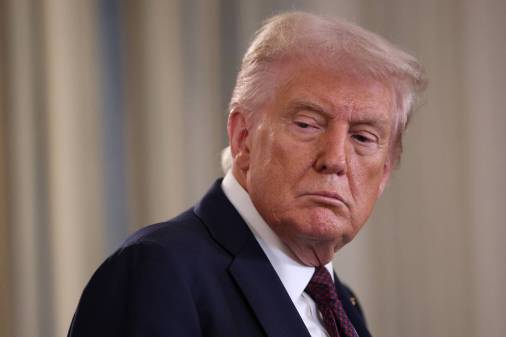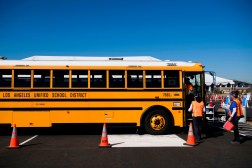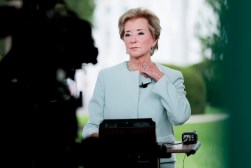Obama urges school superintendents to take digital education pledge

President Barack Obama urged the nation’s 16,000 school superintendents Wednesday to “take the pledge” and commit their districts to supporting the expansion of digital education.
Speaking in person to more than 100 school superintendents, education officials and a few invited students gathered in the White House East Room, the president reiterated the importance of getting more schools and communities to use high-speed Internet to advance digital learning.
The president said the nation’s schools need to do more to support students and teachers, giving them the digital tools and the training they need to prepare young Americans for a world “where the most valuable skill you can sell is knowledge, and the capacity to learn new knowledge.”
The president also outlined steps toward building a “world class education” system in the U.S., including upgrading the way schools use the Internet.
“One of the things we also need to do is yank our schools into the 21st century when it comes to technology, and provide the tools and the training teachers need to use that technology,” he said.
The president also laid out the competitive challenge the U.S. faces, with nations such as South Korea now replacing all of their textbooks with digital content and Singapore equipping schools with broadband connections 40 times faster than what’s delivered to the typical U.S. home.
“Right now, fewer than 40 percent of public schools [in the U.S.] have high-speed Internet in the classrooms. That’s not good, since we invented the Internet!” he said. “It means that in most American schools, teachers can’t use the cutting-edge software and programs that are available tools today.”
The president chided a digital double standard that has emerged “in a country where we expect free Wi-Fi with our coffee. The least we can do is expect that our schools are properly wired.”
The gathering of superintendents marked the latest efforts by the administration to build momentum around the president’s ConnectED Initiative, a plan announced in June 2013 with the goal of connecting 99 percent of students to high-speed Internet. The initiative also places a special emphasis on training and empowering teachers to use technology in the classroom.
The president said since the initiative began, more than $4 billion in public and private funding has been committed to expanding high-speed Internet connectivity and wireless access in America’s schools and libraries.
As part of Wednesday’s White House ceremony, Department of Education Secretary Arne Duncan announced the release of two new publications aimed at supporting school leaders in that effort.
One is a toolkit called “Future Ready Schools: Empowering Educators through Professional Learning.” The toolkit focuses on how districts can use technology to connect educators and provide tailored professional learning experiences to students.
The other publication is a technical assistance guide called “Future Ready Schools: Building Technology Infrastructure for Learning.” The document outlines specific and tangible examples that will help schools improve their technological infrastructure.
But the administration’s primary goal in hosting the event was to get the nation’s 16,000 school district superintendents, many of whom watched the event live online, to sign the administration’s “Future Ready District Pledge.”
The pledge establishes a framework for schools and districts to “develop the human capacity, digital materials, and device access to use the new bandwidth wisely and effectively,” said Richard Culatta, who directs the Department of Education’s Office of Education Technology, and Seth Andrew, a superintendent in residence at the department, in a recent blog post.
The pledge commits superintendents to:
- Foster and lead a culture of digital learning within their schools systems.
- Help schools and families transition to high-speed connectivity.
- Empower educators through professional learning opportunities.
- Accelerate progress toward universal access for all students to quality devices.
- Provide access to quality digital content.
- Offer digital tools to help students and families reach higher.
- Mentor other districts and help them transition to digital learning.
The president closed by leading a digital signing ceremony, in which superintendents in the audience – and their virtual peers online — digitally signed and submitted their pledges.






